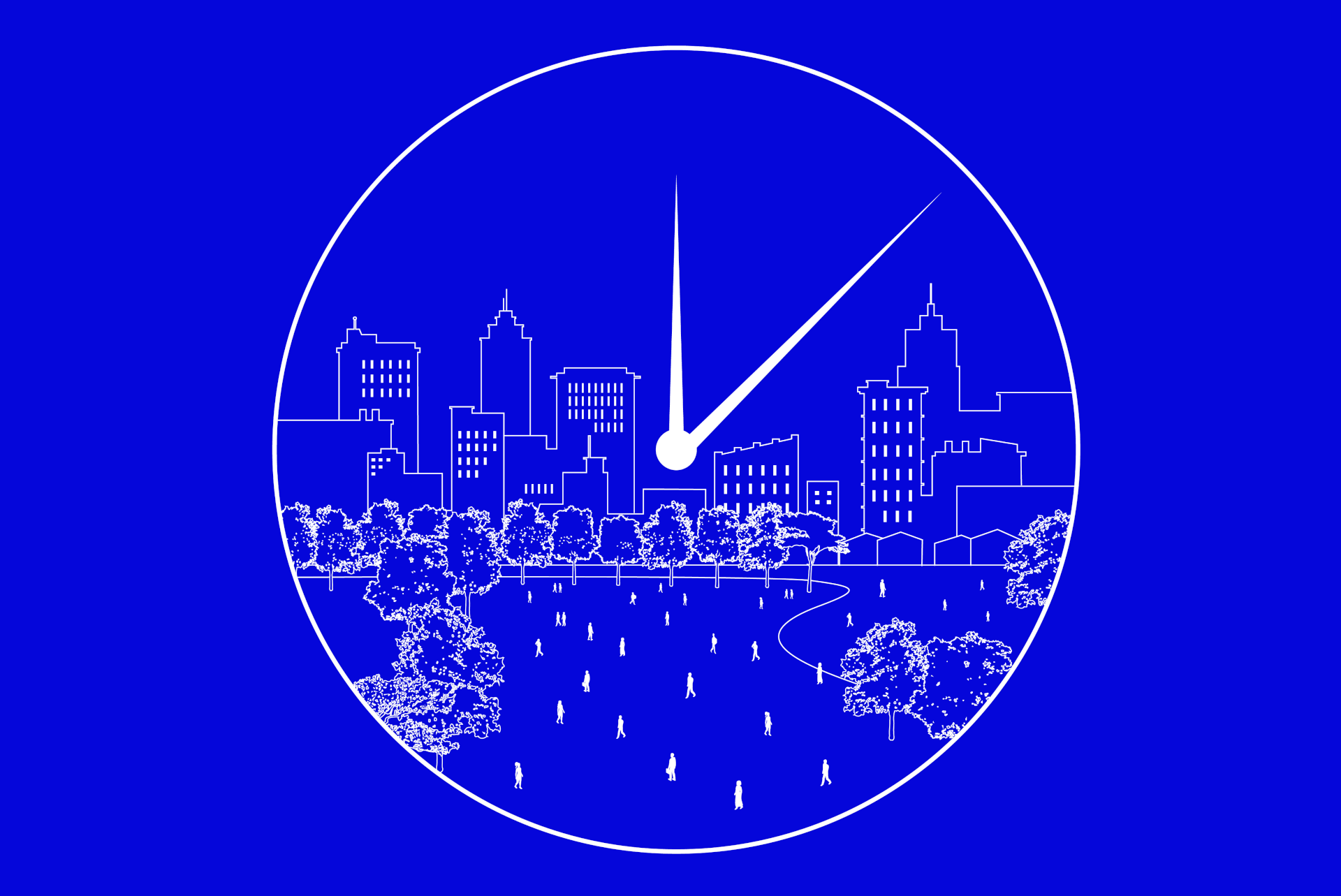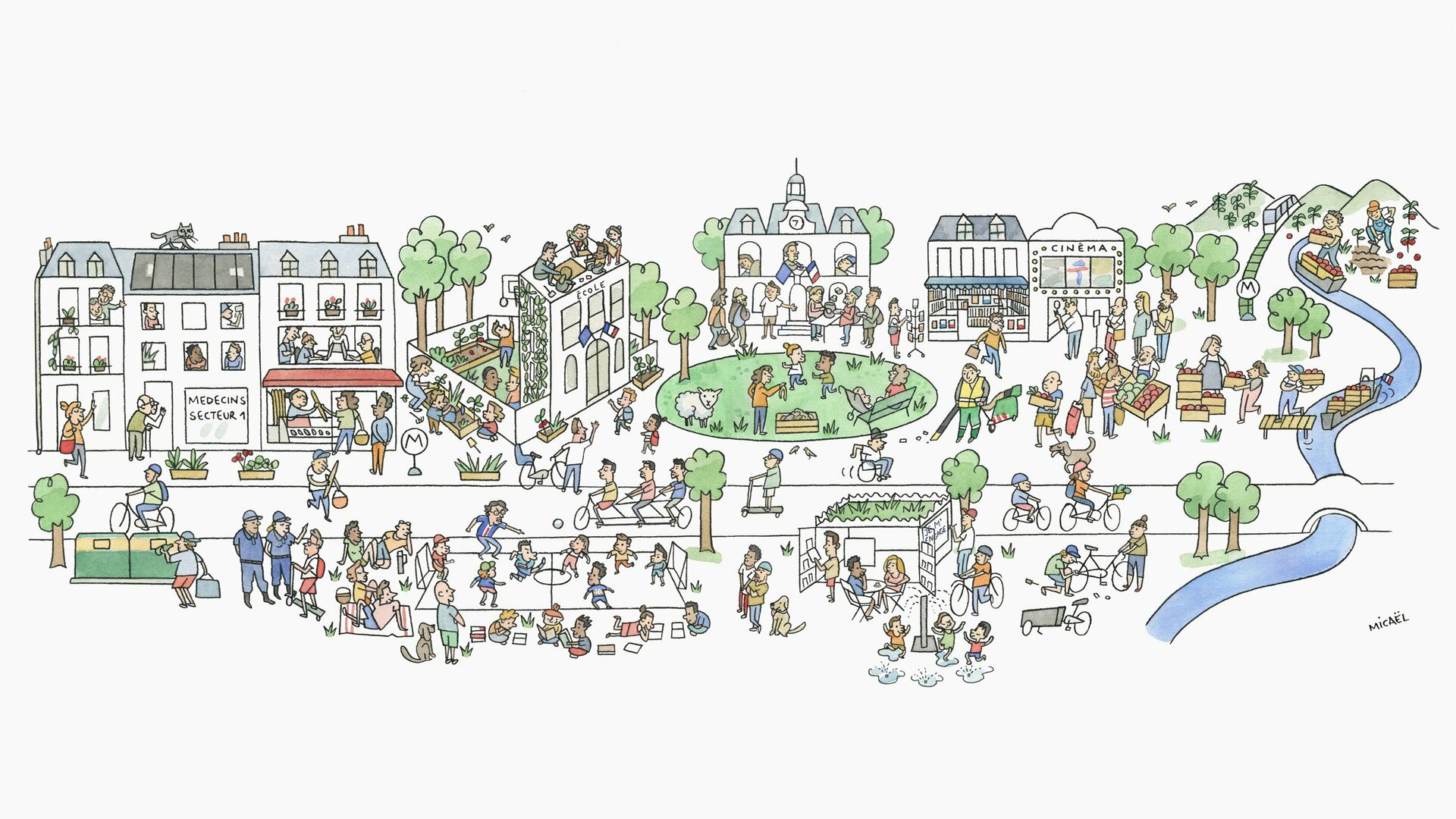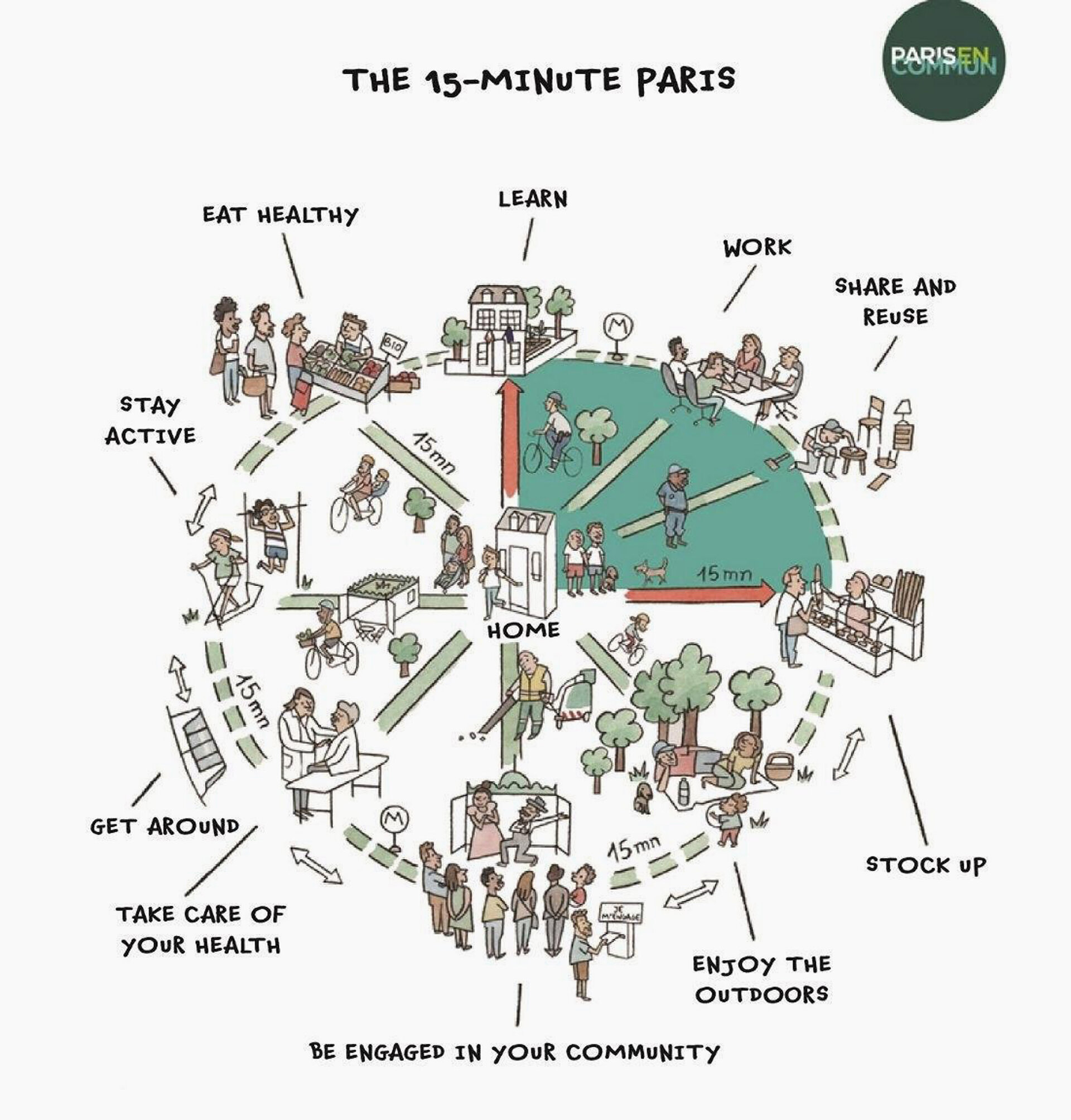Let’s imagine this: a city that is livable and accessible to all its inhabitants. Let’s be even braver. Let’s imagine that the city is being redesigned to be reachable within a 15 minutes walk or bike ride. Does this sound terrific?
For sure it does. And the pandemic has strived many worldwide big and small cities to reconsider their mobility and their accessibility in order to enable a more efficient and sustainable experience.

It has been far too long since we’ve been accepting the unacceptable aspects of the city: noise, pollution, overcrowdedness, traffic – you name it. The concept of a 15-minute city is not a newborn idea, but over the time, it has shown its importance and applicability.
“Why is it that the city does not respond to our needs?” – asks Carlos Moreno on TedTalk. The writer of the newly published book Droit de la cité, argues that the cities should be redesigned through four guiding principles: ecology, proximity, solidarity and participation, enhancing the quality of life within the urban fabric. It is also a response to climate change and pollution. It is a vision of a post-car city, suggesting solutions for tackling the environment and inviting the reader to consider our relationship with spaces we inhabit and the idea of useful time.

In his vision of a polycentric city, the seven essential functions of urban experience (work, housing, food, health, education, culture and leisure) should be relocated within a walkable distance. This encourages the municipalities to adopt an opposite direction of rapid urbanism and to consider the best use of the public-used square meters that the city offers. Moreno discusses proximity in terms of both time and space and refers to mixed-use developments and multicultural neighbourhoods as key improvements of the urban experience, enhancing community participation in the planning process. Here you can find a brief introduction to his concept.
The “15-Minute City” idea, although highly linked with Moreno, is also associated with Paris’s socialist mayor Anne Hidalgo, who already successfully started implementing this direction. Paris became one of the first cities to adopt Moreno’s principles and has regained its public space, reducing traffic and therefore pollution and ensuring a better mobility through transit oriented development. The massive decentralization of the city is generating new services throughout different neighborhoods, promoting new economic models that encourage small shops, fabrication labs and community centers that accomodate different functionalities.

The new city – our city, is therefore capable of reconciliation.
The living city understands the way people interact with the socio-territorial-urban environment and adapts to it.
Foremost human, the new city advocates relationships and exchange to bring participation.
Can we do it in 10 years time?